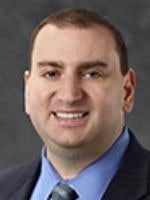Tech Properties v. Huawei (2016-1306), March 3, 2017. Before Judges Moore, Wallach, and Chen.
Takeaway:
-
A district court may only limit claims based on prosecution disclaimer to the extent that the patentee makes clear and unmistakable disclaimers. If a district court limits the claims of a patent more narrowly than the patentee disclaimed during prosecution, the CAFC may vacate the district court’s claim construction.
Procedural Posture:
Appellants appealed following a claim construction ruling from the Northern District of California. After claim construction, the parties stipulated to non-infringement based on the district court’s construction of “an entire oscillator disposed upon said integrated circuit substrate.” Tech. Properties Ltd. LLC v. Huawei Techs. Co., No. 2016-1306, 2017 WL 836597, at *1 (Fed. Cir. Mar. 3, 2017). The CAFC vacated the district court’s claim construction order, provided a new construction, and remanded the case for further proceedings.
Synopsis:
-
Claim Construction – Prosecution Disclaimer: Appellants Technology Properties Limited et al. filed a patent infringement case against Huawei Technologies et al. in the Northern District of California. The district court construed the claim term “an entire oscillator disposed upon said integrated circuit substrate,” recited in representative independent claim 6, based on statements the patentee made during prosecution. During prosecution, the patentee distinguished the claims over the prior art reference Sheets by noting that Sheets requires “a command input … to change the clock speed.” Properties, at *6. The patentee also argued that in the patent at issue, “no command input is necessary to change the clock frequency.” Id. at *4. The district court relied on these statements when construing the claim term to mean “an oscillator located entirely on the same semiconductor substrate as the central processing unit that does not require a control signal and whose frequency is not fixed by any external crystal.” Id. at *2 (emphasis added). The CAFC vacated the district court’s order granting this construction, noting that “[e]very time the patentee mentioned a ‘control signal’ or ‘command input,’ it did so only in the context of using a command input to modify the frequency of the CPU clock.” Id. at *7. Accordingly, the district court’s construction that the oscillator does not require any sort of control signal was too narrow. The CAFC vacated the district court’s construction and remanded for further proceedings.





 />i
/>i
